D-Day Ohio WWII Museum


This poster was issued by the Office of War Information.
Tennessee State Library & Archives
Tennessee State Library & Archives
D-Day Ohio WWII Museum
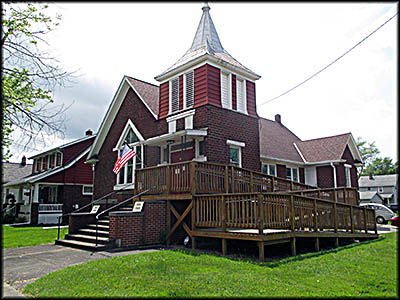
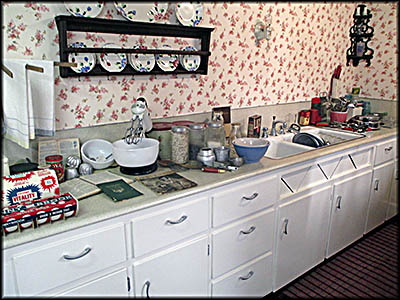
World War II-era Kitchen Reproduction
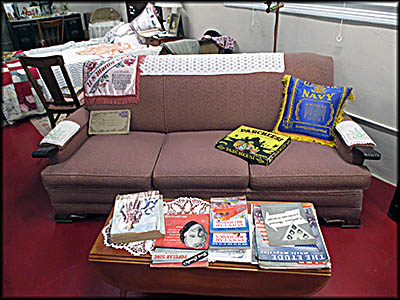
World War II-era Sofa
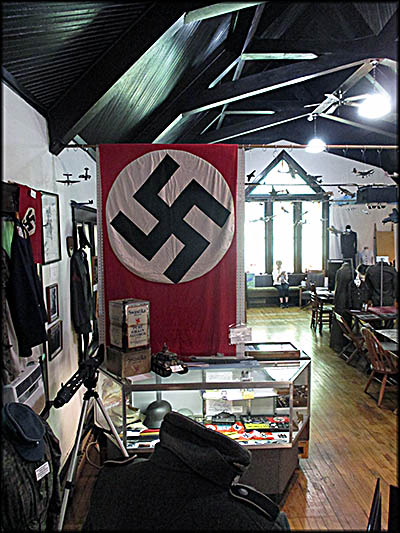
The Nazi flag was brought home by Wilbur Root, who served in the Army Motor Corps.
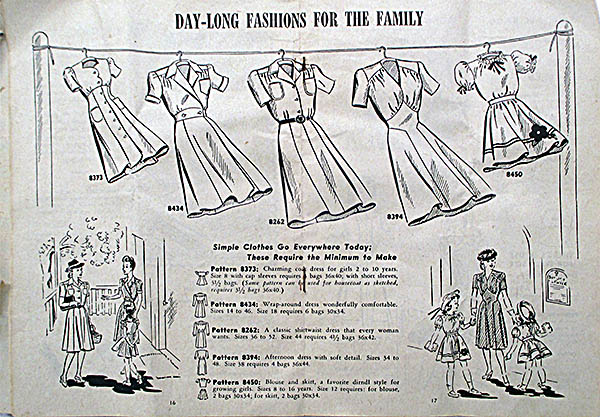
Page from Bag of Tricks for Home Sewing
A selection of newspapers printed during the war.
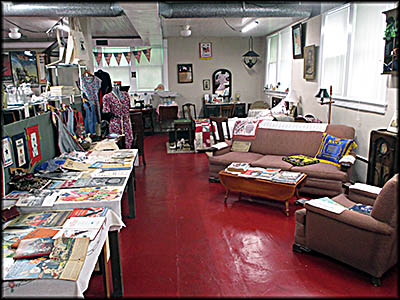
The basement houses artifacts use on the home front.
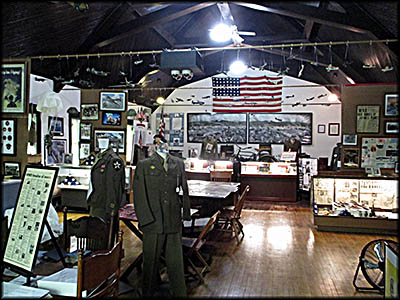
The main floor is where you will find all the military artifacts.
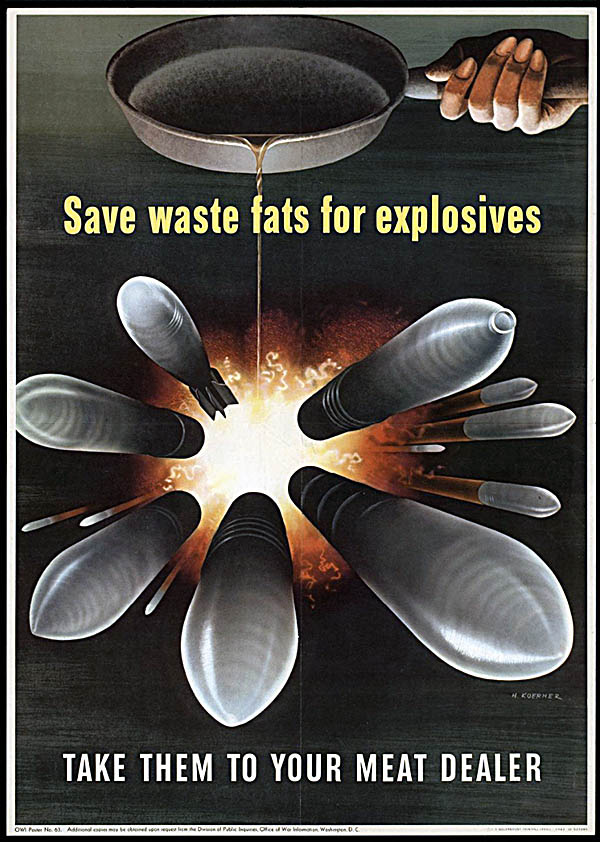
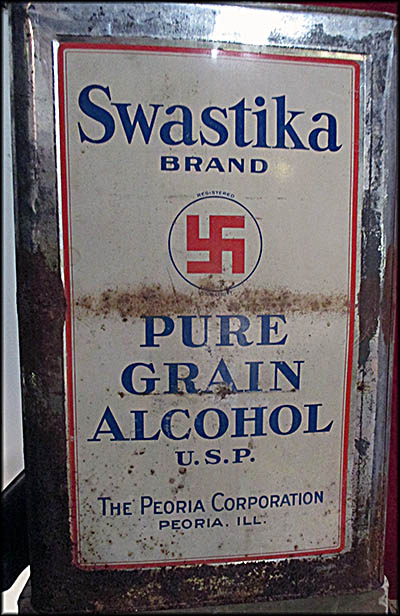
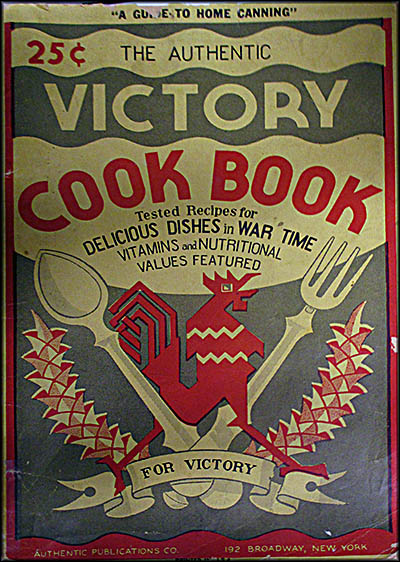
This was published in 1943.
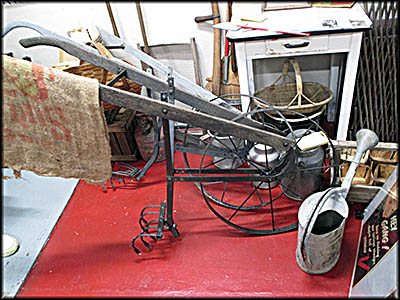
Tools used in a Victory Garden.
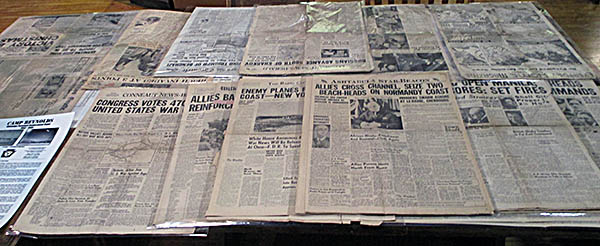
In 1999 the small Northeast Ohio city of Conneaut hosted its first D-Day reenactment, an event it’s repeated ever since. In 2016 it opened the D-Day Ohio World War II Museum in a former Hungarian church. The museum isn’t limited to D-Day but rather covers World War II more generally with a focus on the people from the local community who’d served or lived during the war and from whom most of the museum’s collection comes. The main floor houses military items, while the basement has a home front display that simulates the interior of a typical middle class house during the war years that includes a GE refrigerator and an oven from the 1940s.
World War II was all about recycling everything and anything for use in the war effort. A staff member enthusiastically pointed out that people made their own clothes out of recycled grain and flour sacks. I figured this would be too course for wearing, but I was dispelled of that notion by touching a flour sack dress. People were also asked to grow as much of their own food as they could in so-called Victory Gardens. (I recall seeing a deadly dull show on PBS called Victory Garden, but it was about gardening in general and not these.) Victory Gardens were quite successful. One of the best ones in Conneaut was grown by Edward Dickson. He produced enough for several families, then sold his surplus at Dickenson’s Shop.
World War II was all about recycling everything and anything for use in the war effort. A staff member enthusiastically pointed out that people made their own clothes out of recycled grain and flour sacks. I figured this would be too course for wearing, but I was dispelled of that notion by touching a flour sack dress. People were also asked to grow as much of their own food as they could in so-called Victory Gardens. (I recall seeing a deadly dull show on PBS called Victory Garden, but it was about gardening in general and not these.) Victory Gardens were quite successful. One of the best ones in Conneaut was grown by Edward Dickson. He produced enough for several families, then sold his surplus at Dickenson’s Shop.
Another item the U.S. government encouraged people to save was leftover grease from cooking. This I learned from a poster in a propaganda collection that said: “Save waste fats for explosives—TAKE THEM TO YOUR MEAT DEALERS.” It turns out that you can make glycerin from fats, and that’s a key ingredient in nitroglycerin and dynamite. The U.S. government was especially interested in bacon fat, a pound of which could be distilled down to one-tenth glycerin, which in turn made a fifth of a pound of nitroglycerin. There was even an American Fat Salvage Committee, which was part of the “Salvage for Victory” campaign initiated on January 10, 1942. Neither the poster nor the Committee nor a small payment for it could convince people to turn their fat in, especially that from bacon. Most preferred to save it for their own use.
Children were also enlisted to help. They collected pennies used to pay for the construction of war materials, and bought war bonds and stamps with their spare change. The Japanese invasion of the Dutch East Indies (Indonesia) cut off America’s supply kapok, a fibrous material known as floss that came from the kapok tree. It used for, among other things, the stuffing of life jackets. Fortunately a homegrown substitute, milkweed, was found, but it was estimated that cultivating it at the level needed would take two years. Then someone realized that it was a weed, and those grow everywhere on their own. Each fall the government asked every child capable of it to fill two twenty pound mesh bags of the stuff in states where it grew. One estimate says that the milkweed floss was used to fill about 1.2 million life preservers.
The government had turned to children for milkweed harvesting because most men and women were otherwise occupied in the war effort either at home or abroad. In addition to taking civilian jobs previously held exclusively by men, many women signed up to help more directly in the war effort by joining auxiliary wings of the military. The U.S. Navy, as example, had the Women Accepted for Volunteer Emergency Services (WAVES), a program previously used during the First World War. In addition to doing clerical work, this updated version had them doing jobs such as photography, aviation repair, intelligence, and air traffic control.
One Ohio woman who joined the WAVES was Mary Wright (later Owens) from Crawford County. She enlisted on November 10, 1942. At boot camp she learned the basics of being the Navy, such as how to salute and march. Shortages of everything compelled the officer in charge of her company to played Taps on a violin, and they ate baked beans for breakfast every Saturday morning. Having worked at Bell telephone before the war, Wright had the chance to do the same in Washington, D.C., but she instead chose to attend a mechanic’s school in Norman, Oklahoma, from which she graduated as an Aviation Machinist’s Mate 3rd Class. Given the choice of several locations at which she would be stationed, she decided upon Seattle. Her first duty was to work in the Assembly and Repair (A & R) area where plane engines were overhauled. She was discharged on August 29, 1945.
The government had turned to children for milkweed harvesting because most men and women were otherwise occupied in the war effort either at home or abroad. In addition to taking civilian jobs previously held exclusively by men, many women signed up to help more directly in the war effort by joining auxiliary wings of the military. The U.S. Navy, as example, had the Women Accepted for Volunteer Emergency Services (WAVES), a program previously used during the First World War. In addition to doing clerical work, this updated version had them doing jobs such as photography, aviation repair, intelligence, and air traffic control.
One Ohio woman who joined the WAVES was Mary Wright (later Owens) from Crawford County. She enlisted on November 10, 1942. At boot camp she learned the basics of being the Navy, such as how to salute and march. Shortages of everything compelled the officer in charge of her company to played Taps on a violin, and they ate baked beans for breakfast every Saturday morning. Having worked at Bell telephone before the war, Wright had the chance to do the same in Washington, D.C., but she instead chose to attend a mechanic’s school in Norman, Oklahoma, from which she graduated as an Aviation Machinist’s Mate 3rd Class. Given the choice of several locations at which she would be stationed, she decided upon Seattle. Her first duty was to work in the Assembly and Repair (A & R) area where plane engines were overhauled. She was discharged on August 29, 1945.
Probably the most iconic position women held in the military was that of the nurse. On D-Day eighteen nurses known as the Normandy Nightingales landed on Omaha Beach. Dressed as men and weighed down with the tools of their trade, they went ashore under the same intense fire as the men. They were part of the 45th Field Hospital Unit, and after successful landing, they were attached to the First Army during its trek through Europe. Dorthy Richter (later Lewis) was one of these Nightingales. Joining the army in 1941 as a first lieutenant, she was discharged with the rank of captain. Her uniform is in the museum.
Another branch of the military in need of more “manpower” was the Coast Guard. Over 10,000 women joined the Women’s Reserve, or SPARS (Semer Paratus, Always Ready) to fill shore-based duties. In addition to doing clerical work (the default for women at the time because of prevailing sexist attitudes), a small minority were put given jobs in other fields such as rigging parachutes and radio operation. In October 1942, some of latter were brought to work with the top secret LORAN (long range navigation) program, a radio-based forerunner of today’s GPS meant to aid in the navigation of airplanes and ships.
The museum is filled with reprints of brief biographies and personal accounts of those who served in the from the local area. The accounts and biographies of soldiers who saw combat are sparse and dry, mainly because few ever spoke about what they did. The synopsis of Linn Newman, as an example, says his was a nose turret gunner on a B-24 Liberator bomber based in Italy and that his plane was shot down, but place it was headed to is blacked out on the information sign. His plane was headed into Romania and it was forced to landed in Turkey, where he and his crew was briefly interned.
Another branch of the military in need of more “manpower” was the Coast Guard. Over 10,000 women joined the Women’s Reserve, or SPARS (Semer Paratus, Always Ready) to fill shore-based duties. In addition to doing clerical work (the default for women at the time because of prevailing sexist attitudes), a small minority were put given jobs in other fields such as rigging parachutes and radio operation. In October 1942, some of latter were brought to work with the top secret LORAN (long range navigation) program, a radio-based forerunner of today’s GPS meant to aid in the navigation of airplanes and ships.
The museum is filled with reprints of brief biographies and personal accounts of those who served in the from the local area. The accounts and biographies of soldiers who saw combat are sparse and dry, mainly because few ever spoke about what they did. The synopsis of Linn Newman, as an example, says his was a nose turret gunner on a B-24 Liberator bomber based in Italy and that his plane was shot down, but place it was headed to is blacked out on the information sign. His plane was headed into Romania and it was forced to landed in Turkey, where he and his crew was briefly interned.
The most complete account I saw was the one about Sergeant Daniel M. McBride, Jr. He was the stereotypical tough sergeant who the enemy couldn’t kill despite all its efforts. Serving in the 101st Airborne Division (the “Screaming Eagles”), he was armed with a grenade launching anti-tank rifle. His unit was in the 502nd Parachute Infantry Regiment, 3rd Platoon, F Company. Although terrified of heights, he joined up as a paratrooper anyway, and despite many drops, was still scared of heights at the time of his passing. Dropping from the air into France on D-Day, his leg got tangled in his parachute, causing him to land on his head, which knocked him out. He received three purple hearts: one for being shot in the arm, one for being blown off a dike in the Netherlands by enemy artillery that resulted in a crushed ankle, and one for when a tree branch fell on him during the Battle of the Bulge. By the end of the war, only nine of the original 119 men from his company still lived. Passing away on February 16, 2022, he’d lived to the ripe old age of ninety-seven!
Many soldiers returning after the war brought with them souvenirs taken from the enemy. Wilbur Root from Ashtabula served in the Army Motor Corps in France. A friend of his was tasked with collecting war trophies such as Nazi flags and banners. Wilbur managed to abscond with one of the former, which is why it now in a museum in Northeast Ohio. Which, it ought to be said, was canny enough to put the swastika into historical context by showing a few pre-Nazis American artifacts with that symbol on them. Before the Nazis appropriated it, the swastika was a sign of good luck throughout much of the world.
D-day succeeded in part because of aid by the French Resistance. Its harassment of Germans delayed reinforcements from arriving in the first critical days by carrying out sabotage operations against vital links such as railroads and communication. More passive acts of resistance included tweaking blueprints to make a weapon useless and wrecking rather than repairing German vehicles.
I visited the museum during Memorial Day Weekend, an appropriate time to honor Americans who have fallen in the service of their country. While it might only be open from Memorial through Labor Days on the weekends, this museum is staffed by people who are both enthusiastic about the topic and delighted with their museum. One staff member told me the sergeant’s jacket I was looking at belonged to her father. The love and pride in her voice made the visit worth had it been a dud—and it certainly wasn’t.🕜
Many soldiers returning after the war brought with them souvenirs taken from the enemy. Wilbur Root from Ashtabula served in the Army Motor Corps in France. A friend of his was tasked with collecting war trophies such as Nazi flags and banners. Wilbur managed to abscond with one of the former, which is why it now in a museum in Northeast Ohio. Which, it ought to be said, was canny enough to put the swastika into historical context by showing a few pre-Nazis American artifacts with that symbol on them. Before the Nazis appropriated it, the swastika was a sign of good luck throughout much of the world.
D-day succeeded in part because of aid by the French Resistance. Its harassment of Germans delayed reinforcements from arriving in the first critical days by carrying out sabotage operations against vital links such as railroads and communication. More passive acts of resistance included tweaking blueprints to make a weapon useless and wrecking rather than repairing German vehicles.
I visited the museum during Memorial Day Weekend, an appropriate time to honor Americans who have fallen in the service of their country. While it might only be open from Memorial through Labor Days on the weekends, this museum is staffed by people who are both enthusiastic about the topic and delighted with their museum. One staff member told me the sergeant’s jacket I was looking at belonged to her father. The love and pride in her voice made the visit worth had it been a dud—and it certainly wasn’t.🕜
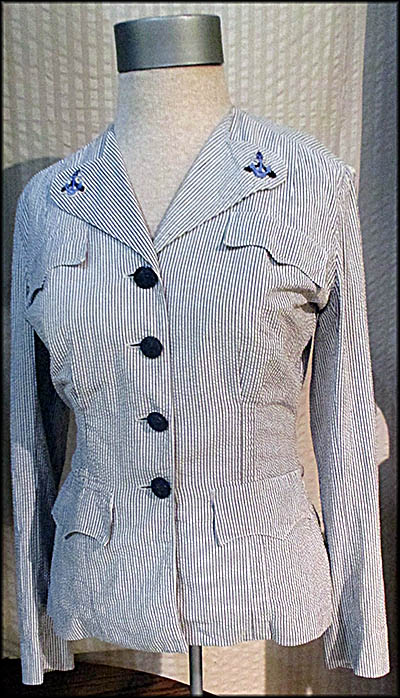
WAVES Uniform Shirt
Swastikas were a popular symbol on American products before the Nazis appropriated them for their own nefarious purposes.
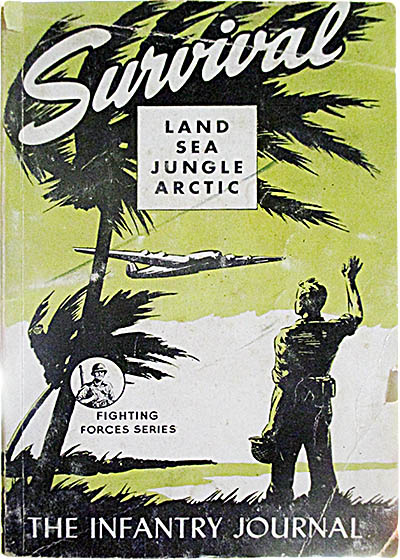
Variations of these manuals were issued. This one was specifically infantry.